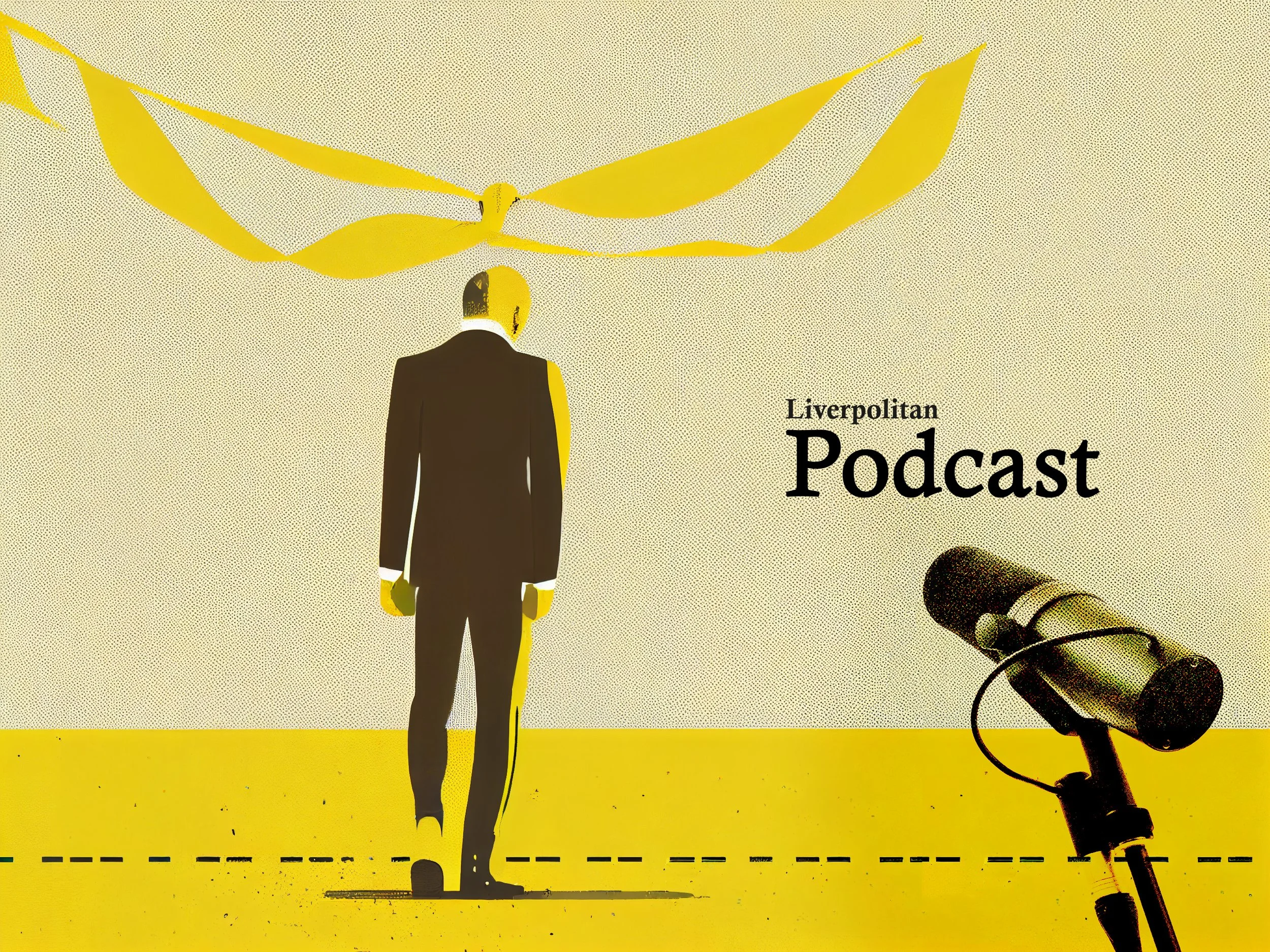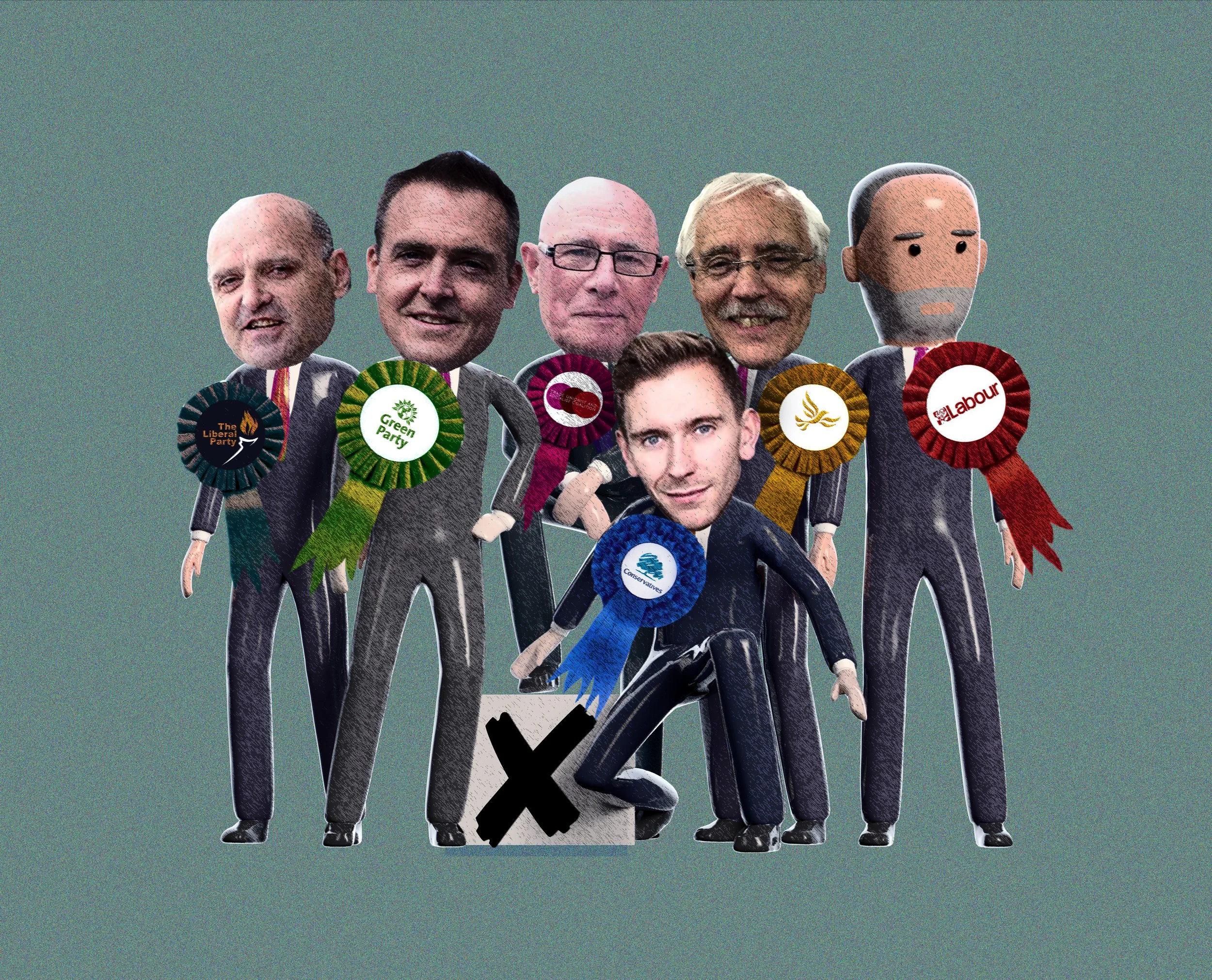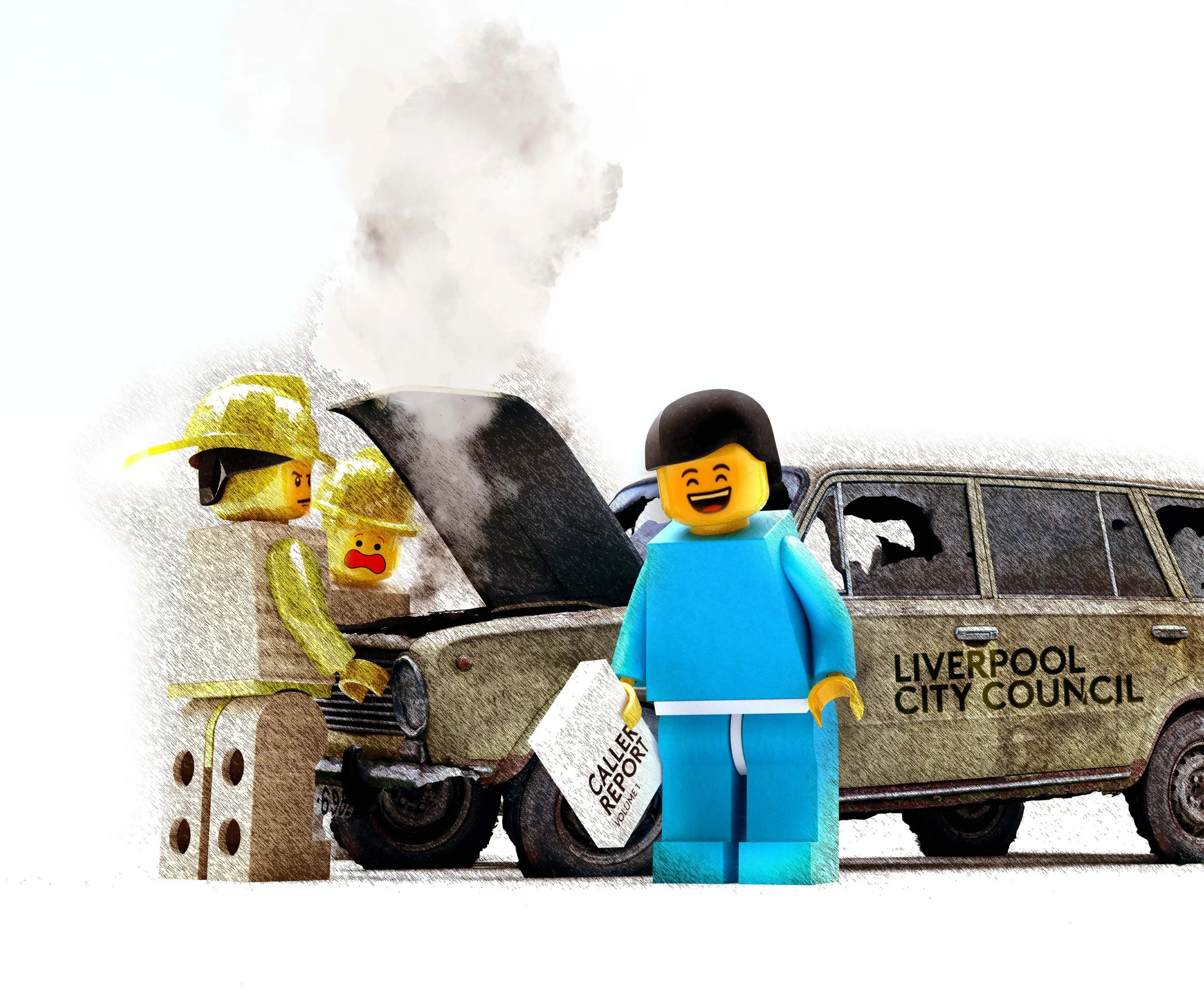Recent features
Remembering Capel Celyn
In 1965, the Welsh village of Capel Celyn was flooded to supply fresh water to Liverpool. It’s been a sore point ever since, provoking Welsh nationalist sentiment and an official apology from Liverpool City Council forty years later. Looking back, was this simply a case of predatory exploitation or can an argument be made that it was a rational decision based on the needs of the majority?
John P. Houghton
Trinity Mirror / Mirrorpix / Alamy Stock Photo
In 1965, a Welsh village was flooded to supply fresh water to Liverpool. It’s been a sore point ever since, provoking Welsh nationalist sentiment and an official apology from Liverpool City Council forty years later. Looking back, was this simply a case of predatory exploitation or can an argument be made that it was a rational decision based on the needs of the many?
Described by the BBC as “an idyllic Snowdonia village”, Capel Celyn in the Tryweryn Valley, North Wales was a quiet, rural settlement, home to 67 people, a general store, a post office, a cemetery, a school, and the Methodist chapel after which it was named. Reliant on the surrounding farmland for jobs, bucolic Capel Celyn seemed a world away from the kind of UK envisaged by the British Prime Minister, Harold Wilson when he announced his plan to transform these isles by unleashing the white heat of a new scientific revolution.
Pobol y Cwm / People of the Valley
According to Prof. Ed Atkins of the University of Bristol School of Geographical Sciences, the village typified a “certain type of Welshness” that was deeply connected to the landscape and, in a country losing its linguistic heritage, still predominantly Welsh-speaking. Liz Saville Roberts, the current MP for Dwyfor Meirionnydd described the inhabitants as an integral part of “one of the richest folk cultures in Europe”.
Yet for all its traditional, rural qualities, the village was actually moving into the modern, post-war world. Some of the villagers had radios and TVs and more were on the electricity grid. Capel Celyn was a living, breathing, working community. It was not a moribund settlement in terminal decline. And yet, I describe Capel Celyn in the past tense because, in 1965, the village and surrounding farmlands were deliberately flooded. Despite a decade of organised opposition and bitter resistance, Alderman Frank Cain of the Corporation of Liverpool pulled a lever and buried the place under 68 million tonnes of water.
The stated rationale at the time was that the city had started to run out of water because its economy and people were becoming “increasingly industrialised” and thankfully due to rising hygiene standards, “increasingly sanitary”. And so to meet this need, Capel Celyn became Llyn Celyn, or to use the English, Lake Celyn. The natural terrain of the Tryweryn Valley became a man-made reservoir.
The story of Capel Celyn is barely known in England. The name only appears in the media when, as with this summer, hot weather and drought conditions reveal “haunting” images from an underwater village. ‘Underwater’ invokes the myth of Atlantis and sounds much less disturbing than “drowned” or “flooded”.
In Wales, however, especially in the north, the name still resonates. In his 2017 Raymond Williams lecture, Welsh actor Michael Sheen listed the destruction of the settlement as being among the worst humiliations inflicted on the Welsh by the British in their entire history. The other national disgraces he rolled off included the construction of Edward Longshanks’ ‘Ring of Iron’ castles along the coast of North Wales to intimidate the locals into acquiescence; the brutal suppression of ironworkers opposing the lowering of their wages by British troops during the Merthyr Rising; and the quashing of the Rebecca Protests, which had seen struggling tenant farmers pushed to their financial limit by the imposition of road tolls. That’s the kind of company in which the drowning of Capel Celyn was viewed.
In this article, I’m going to look at the events running up the flooding, the resistance it provoked, and the lessons we can learn as water access and water shortages become increasingly seen as a source of conflict in a global climate emergency.
Thirst
The stated justification for the drowning of Capel Celyn was that Liverpool was running out of water for domestic and industrial use. The Corporation of Liverpool, the forerunner to the council, claimed that its existing supplies were on the brink of exhaustion. The city’s need for water, it was argued, could only be met, by “overdrawing” from existing reservoirs and “obtaining temporary bulk supplies of water from Manchester”. With the city’s industries growing and the replacement of old slums with new housing increasing the demand for clean water, the situation was, they said, one of “very considerable urgency”.
For those who argued that Liverpool needed to look beyond its current sources, the Tryweryn Valley was the obvious candidate. It was geographically close to Merseyside, was one of the largest water watershed catchment areas in Wales, and could be turned into a large reservoir with a single dam.
“Everyone deplores the fact that in the interests of progress sometimes people must suffer, but that is progress.”
Bessie Braddock, Labour MP for Liverpool Exchange
Of course, Capel Celyn was not the first, nor would it be the last, settlement to be sacrificed to meet a town or city’s demand for water. Welsh rivers had been dammed and re-directed since the 1800s. Llyn Efyrnwy (Lake Vyrnwy) was built as a reservoir in the 1880s by the Liverpool Corporation Waterworks Committee. This earlier scheme necessitated the flooding of Vyrnwy Valley and the submerging of the rural settlement of Llanwddyn. In the process, a church, two chapels, three inns, ten farmhouses, and 37 houses were dismantled.
By the 1950s, however, the context had changed. The Welsh nationalist and pro-independence movement, spearheaded by Plaid Cymru — Party of Wales, was in the ascendant. They chafed at the extent to which Welsh land and resources had been confiscated and appropriated over the centuries. By the end of World War Two, for example, fully 10% of Welsh land was owned by the Ministry of Defence, as cited by Dr Ed Atkins. It was hardly surprising then, that any new plans would meet with resistance.
The first the Capel Celyn villagers heard of the plans was in the winter of 1955 when the Welsh edition of the Liverpool Echo reported that the Corporation of Liverpool was considering flooding the valley to construct a reservoir.
However, it wasn’t until January 1957, that the Corporation held a meeting with the community in their own village. The Corporation claimed that there had been meaningful consultation, but campaigners and local authorities disputed this vehemently. They claimed that they were effectively presented with a fait accompli, which they had no power to reject or amend. As one of the scheme’s opponents in the House of Lords put it a few years later; “there were rumours… but we heard nothing more…until the complete scheme was there. I do not suggest that Liverpool is a "big bully," but that is the treatment a bully metes out.”
Various accounts suggest that in essence, officials’ contacts with villagers were not about consulting or listening. They were there to explain, in cold and technical terms, a decision that had already been made and would be enacted regardless of the villagers’ views.
Resistance
There was immediate and furious opposition to the plans.
Many were opposed on the grounds of natural justice. It was simply unfair to displace an entire community in the service of another. A more explicitly political form of opposition depicted the Corporation’s behaviour as another example of England’s colonial exploitation of Wales’ natural resources.
A pamphlet produced by Plaid Cymru stated that the decision was not driven by need but by greed; the Corporation wanted to take the water and sell it for a profit, they asserted. This point was also made by Welsh parliamentarians in the debates that, as we’ll soon see, became an integral part of this story.
The resistance on the ground took many forms. The villagers’ first act was to form the Tryweryn Defence Committee. The Committee organised an extensive letter-writing campaign, mobilising citizens across Wales, and supporters across the globe, to write to the Corporation, the Home Office, №10 Downing Street, and anyone else who might listen.
Dr Matthew Green, who covers Capel Celyn in the excellent Shadowlands: A Journey Through Lost Britain, describes the tone of the letters as “beautifully vitriolic”.
The Defence Committee organised a rally in Bala, the nearest town, and a public meeting in Cardiff, to raise awareness of the threat they faced. Captured by the local press, children from the doomed school held their own march through the village. The Committee also sent a delegation to try to speak at a meeting of the Corporation, but were heckled and eventually ejected from Liverpool Town Hall. A protest march in the city was met with similar hostility. Eurgain Prysor Jones was just three years old when she was taken on the march by her parents. As she recalls, “the reception we had in Liverpool was awful. People were spitting and throwing rotten tomatoes at us. It was an awful disappointment.”
In December 1956, Liverpool Corporation voted in favour of building the dam and flooding the valley. The Corporation, however, had no power over land in Wales. They would need the blessing of a higher power to get their way.
“That is progress”
Given the scope and scale of opposition, it would have been extremely difficult and time-consuming to go through the normal planning procedures to construct the reservoir. What Welsh politician would vote to drown a Welsh-speaking village to supply water to an English city?
The Corporation had to identify an alternative route to get the planning permission they needed to proceed. Like the water they would unleash on the village, they found a way around the obstacles in their path by working with friendly MPs from other parts of the UK to sponsor a Private Members’ Bill in parliament. This mechanism allowed individual MPs to put forward legislation, separate from the government’s legislative agenda.
The Tryweryn Reservoir Bill was presented to the House of Commons in January 1957. Passage of the bill into law would allow the Corporation of Liverpool to circumvent the Welsh planning authorities and obtain a Compulsory Purchase Order for all the land in the valley. When the motion came to a vote in July of that year, 35 of the 36 MPs representing Welsh constituencies voted against it. The 36th, the Conservative MP for Cardiff North, abstained.
“We knew our home would be gone, our chapel would be gone, our school would be gone and our friends would be moved to different parts… I think if it happened today we would have (been given) counselling for trauma.”
Eurgain Prysor Jones, resident of Capel Celyn
So what was the attitude of non-Welsh MPs? What of the Labour MPs who were, in theory at least, guided by notions of working-class solidarity across national boundaries? Bessie Braddock, the Labour MP for Liverpool Exchange, justified the decision on utilitarian grounds. “Everyone deplores the fact that in the interests of progress sometimes people must suffer, but that is progress,” she said.
The same pragmatic apologia was offered by another Liverpool MP, the Conservative Sir Victor Raikes. “If it is decided that it is in the interests of a large number of people [and] the rights of a small number of people are affected, then, subject to proper safeguards for the minority, the right of the majority must prevail,” he intoned.
Meanwhile, the Conservative MP, Henry Brooke, may have faced a conflict of loyalties. He was both the Minister for Housing and Local Government, and the Welsh Secretary. In the former role, he would no doubt support any measure to fuel the industrial resurgence of the North West. In the latter role, should he have been minded to stand up for the rights of the people of the valley? If he did have mixed feelings about the choice before him, he concealed them very well. Brooke voted for the bill. Its successful passage, on a vote of 166 to 117, left the Welsh authorities utterly impotent. and meant the Corporation of Liverpool could proceed without delay.
The villagers, their supporters and sympathisers, had petitioned, protested, and marched. They had taken their case to the Corporation of Liverpool and the House of Commons in London. Both times their pleas had fallen on ears that were not only deaf, but deliberately closed; their plight met with the sort of bureaucratic detachment and dry, etiolated language that justified their suffering in the cause of the common good.
“A darker turn”
Parliament’s decision triggered a second, more direct and aggressive wave of resistance. What else was there left to do after the inability of Welsh MPs to stop the plan had shown, as one article at the time put it, “how powerless Wales was in a political sense”?
The fight to halt the project took a darker turn. In 1962, shortly after evictions began, two men travelled from Gwent to damage heavy machinery on the site. Their fine of £50 was paid by supporters and they were greeted as heroes outside the court by Gwynfor Evans, the President of Plaid Cymru. In early 1963, with the construction of the dam well underway, three men formed Mudiad Amddiffyn Cymru — the Movement for the Defence of Wales. In their first direct action, they planted a bomb on the building site. The explosion destroyed a transformer and earned one of the men a year in jail.
Yet the work ground on.
Ghost town
Like a prisoner on death row, the valley had to be made ready for its end. As Dr Green puts it in Shadowlands, “The Tryweryn valley was systematically scoured of buildings, trees and graves.” The houses were dismantled. Bodies in the cemetery were disinterred, with families given the grim choice of paying to have their relatives’ remains removed, or doing it themselves. The church was deconsecrated, with some of the masonry used in the construction of the dam.
The final residents were evicted in the spring of 1963.
Some villagers did reconcile themselves to a different future. Green tells the story of John and Mabel Evans who agreed to move out of their home into a larger house that came with electricity and 34 acres of land. But they were very much in the minority. Of the 67 inhabitants, 48 people refused to do a deal with the Corporation and were moved against their will.
Eurgain Prysor Jones, the young girl we met earlier when she marched through Liverpool, looked back as an adult on the emotional impact of their ousting; “It was a very unsettling time… We knew our home would be gone, our chapel would be gone, our school would be gone and our friends would be moved to different parts… I think if it happened today we would have (been given) counselling for trauma.”
In September 1964, the basin’s floodgates were closed and the river was dammed.
The scene was set.
Here comes the flood
Astonishingly, given the hurt and anger they had provoked, the Corporation of Liverpool decided to make a day of the drowning.
It was Thursday 21st October 1965. The Corporation’s 400 invited guests were met with at least the same number of protestors who, wielding placards and megaphones, barracked the VIPs as they arrived in a convoy of official cars. The subsequent events would be farcical, even comical, if the context for the day was not so tragic. The protestors cut the microphone lead, so the dignitaries’ speeches were drowned out by chants and curses. The Lord Mayor of Liverpool had to duck and weave his way through a hailstorm of insults and projectiles. As one protestor recalled, "They were driving the dignitaries from Liverpool across the dam. Each time a car went past we'd lift it off the road and rock it. We ran down to the marquee and I saw a man pick up a brick and throw it.”
The planned forty-five-minute ceremony of self-congratulation was condensed to a chaotic few minutes before Alderman Cain pulled the lever and the deed was done.
Après le déluge
We can look at the legacy of Capel Celyn in a number of ways.
In practical terms, the water from the valley did flow to Liverpool. A general argument can be made that, when building essential infrastructure, the needs of the many should come before those of the few, as long as there are robust and democratic safeguards in place.
A decade ago, some residents’ groups and businesses in East London were moved, through compulsory purchase, and despite their stiff opposition, to make way for what became the London 2012 Olympic Park. Today, advocates of the HS2 high-speed rail line might argue that the negative impact on villages along the route is justified by the claimed benefits that the route will bring to millions of people in the North. As long, of course, as there is adequate compensation and engagement.
It is hard to make this argument in relation to Capel Celyn. Compensation was offered to the villagers, but only after a decision had been taken and without meaningful consultation with the residents or their representatives. When they tried to make their voices heard, they were rejected and ignored.
Most significantly, there remains controversy to this day as to the true scale of Liverpool’s need for water. In the parliamentary debate mentioned earlier, Thomas Jones, MP for Merionethshire, argued that “Liverpool is (involved) in this adventure… for the sake of profit out of the sale of water” and had “in some mysterious way” increased the amount of water it needed between readings of the parliamentary bill. His view was seconded by Goronwy Roberts, MP for Caernarvon, who argued that the bill would “confer on a single municipality… a monopoly on the resources of one of the greatest water catchment areas in Wales.”
In 2015, the retired Labour MP and cross-bench peer, Lord Elystan Morgan seemed to substantiate these claims. Appearing in a BBC documentary on the event, he claimed, “In the 10 years preceding, the population of Liverpool had decreased… Liverpool was selling industrial water to 24 other authorities, making a lot of money, and it wanted to maximise that profit. That’s what Tryweryn was about.”
Liverpool City Council had already issued an apology by this point. In 2005, a motion passed in the council chamber recognised “the hurt of forty years ago” and said sorry for “any insensitivity by our predecessor council at that time”. The apology was short and did not address the specific arguments about Liverpool’s need, or otherwise, for Welsh water.
Within Wales, the loss of Capel Celyn boosted the nationalist, independence cause. Plaid Cymru’s vote share in the 1951 general election was 0.7%. In 1959, it was 5.2%.
Cofiwch Dryweryn / Remember Tryweryn became an important political slogan of the Welsh nationalist movement. Tryweryn memorial wall just outside Llanrhystud.
Peter Brown, CC BY-SA 4.0 via Wikimedia Commons
Clearly, there will have been other events and trends shaping people’s voting behaviour. And non-nationalist parties tended to play down Capel Celyn’s political impact. The former Labour First Minister Rhodri Morgan described the idea that the events of the 1950s and 1960s catalysed the independence movement as a “little bit of nationalist myth-making.”
Nonetheless, it seems incontrovertible that the flooding of Capel Celyn was one important factor in the rise of Welsh nationalist and pro-independence sentiment, as well as the resurgence of the Welsh language.
Remembering
We cannot undo what was done to Capel Celyn. We cannot unmake the traumatic memories, re-fill the graves, or rebuild the demolished homes. But we can remember and remembering can be a powerful and political act. During the 1960s, two graffitied words started to appear all over Wales - Cofiwch Dryweryn. Remember Tryweryn. The most famous marking is found at Llanrhystud, near Aberystwyth.
The message needs to be heard far beyond Wales. As the world’s climate warms, and the global population continues to grow, water is becoming an increasingly precious resource. Wars fought over water may be common occurrences in the coming centuries; fought just as frequently as conflicts for land and oil have been in our time.
To avoid such a dystopian future, we need to support international measures like the UN Water Convention. This is a legal framework that facilitates cooperation on the use of water in an equitable and sustainable way across national borders.
The UK has signed up to the convention but has yet to ratify it. This is something we can change.
John P. Houghton is a freelance consultant in the fields of urban regeneration and economic development. He helps people to make their towns and cities even better places to live. John was born and raised in Kirkby. He tweets @metlines.
Share this article
What do you think? Let us know.
Write a letter for our Short Reads section, join the debate via Twitter or Facebook or just drop us a line at team@liverpolitan.co.uk
The Quest For Utopia
Where once utopian thinkers dreamed of creating the perfect world, today we seem more inclined to expect the worst. Haunted by past horrors and dispirited by dystopian visions of our future, are we right to fear our dreams of perfection lead inexorably to disorder and tyranny? If one person’s utopia is another’s hell on earth, is it time to throw in the towel or should we keep aspiring for better?
Pauline Hadaway
When Eric Hobsbawn, one of the foremost historians of the twentieth century, was invited to address the World Political Forum in 2005, almost fifteen years after the collapse of the Soviet Union, he used his speech to express admiration for Mikhail Gorbachev, the last Soviet leader, and architect of perestroika, who died last week, aged 91. Extolling the almost bloodless transition from communism to post-communism in Eastern Europe, while lamenting the social, economic and cultural catastrophe that followed, Hobsbawn proclaimed that the world had witnessed ‘the last of the utopian projects, so characteristic of the last century’. Perhaps surprisingly, ‘the last of the utopian projects’ was not an allusion to Soviet communism, but rather to the epic triumph of Western capitalism and the associated belief that liberal democracy now represented the final, ideal mode of government. Addressing the Forum - with its audience of political, business and cultural leaders and its impeccably utopian mission ‘to solve the crucial problems that affect humankind today’ - Hobsbawn, a lifelong Marxist, declared that it was the visions of liberal, not socialist utopias that now epitomised the triumph of hope over historical realism.
Two years ago, The Liverpool Salon discussed the economic future of the North, in the light of recently made election promises to level up forgotten towns and regions, where growth had lagged behind the prosperous Southeast. In the middle of Britain’s first national lockdown, the future looked grim, yet barely 12 weeks earlier, UK Chancellor Rishi Sunak had pledged some £640 billion capital investment in roads, railways, schools, hospitals and power networks, promising that ‘no region will be left behind’. After decades promoting the values of individual responsibility, the benefits of privatisation and the evil of state handouts, was a Tory government prepared to rip up its fiscal rule book to lay the ground for a new Jerusalem in Labour’s old northern heartlands? Similarly, Manchester’s metro mayor, Andy Burnham, warned there would be no return to ‘business as usual’, now that the pandemic had exposed the gaps in social care systems and the weaknesses of the gig economy. Appealing for consensus and cooperation, Burnham called on civic leaders to get behind his strategy to ‘build back better’, based on valuing the dignity of labour and fostering mutual dependency and community support. Having grown great cities of culture from the dung of deindustrialisation, were Britain’s metro mayors ditching their enthusiasm for trickle-down economics and dreaming of a return to grass-roots socialism? The world transformed by an unlooked-for natural event is an archetypal theme in utopian – and dystopian – fiction. Were these grandiose visions of transformation to new and better ways of living, a genuine map to the future or nothing more than flights of fancy, designed to distract us all from the deepening political crisis?
Of all the grandiose political projects that emerged from the nineteenth and twentieth centuries, Marxism, the ideological foundation of Soviet communism, made the most audacious claims – not least of which was the belief in its own historical necessity as part of the onward drive of human progress. However, communism’s grand promises of peace and freedom rang hollow during the period of Soviet communism, which saw the creation of some of the world's most militarized and ruthless police states. The murderous tyranny of Stalin’s Great Purge saw the execution of at least 750,000 people deemed ‘enemies of the state’ with many more sent to the Siberian Gulags. After Stalin, the remaining power and authority of the Soviet system rested on its promise to harness the forces of industrial modernity to banish scarcity and ensure economic security and well-being for all. Though hard to imagine from today’s perspective, the Cold War was as much a competition over the best way to organise the future of humanity, as it was a race to build more nuclear missiles and tanks. The question of which system – capitalism or communism – offered the best means of meeting human needs was central. Looking back, the whole Cold War period abounds in paradox. At its height, and in the midst of a terrifying escalation of the arms race which threatened global nuclear annihilation, and with brutal proxy wars raging in Africa and South East Asia, populations from both sides of the Iron Curtain still maintained their belief in the possibility of peaceful international cooperation. Importantly, both sides still believed in the certainty of future material progress. At a time of rising expectations, as the world tried to put the devastation and depravities of WW2 behind it, the ideological resentments that had frozen East-West relations were simultaneously fuelling intense competition over the rival systems’ capacity to deliver cultural, educational and medical advances and to expand the bounds of knowledge and scientific exploration for – both claimed - the benefit of all mankind.
The struggle between competing visions of the future took a somewhat bizarre turn in 1959 at the opening of the American National Exhibition in Moscow’s Sokolniki Park, designed to display the very best in American life to a curious Russian public – in cars, homes, fashion, art, and - that great icon of American modernity - Pepsi Cola. Against the surreal backdrop of an American model kitchen display, a heated argument erupted between US vice-president Richard Nixon and Soviet First Secretary, Nikita Khrushchev. Nixon boasted that capitalism had provided American steel workers with affordable homes, dish-washers and colour TVs, provoking first-secretary Nikita Khrushchev’s angry riposte:
“Is that what America is capable of, and how long has she existed? 300 years? 150 years of independence and this is her level. We haven't quite reached 42 years, and in another 7 years, we'll be at the level of America, and after that we'll go farther.”
The fact that the Soviets were willing to host such an event might be seen as a testament to their own cultural confidence at the time. Thirty years on from the kitchen debate, the USSR had dissolved into chaos, consigned to the dustbin of history, along with its own futuristic visions of space colonization, flying cars, jet-packs and miracle kitchens for all. Good riddance, declared hard-headed economic realists and monetarists like Milton Friedman and Margaret Thatcher, while promptly proclaiming the triumph of their own vision of property ownership and purchasing power as the pinnacle of human happiness and freedom.
This ‘Last Utopia’ was thus conceived as the old one heaved its last, its future guaranteed within a harmonious framework of global institutions and markets, to which there could be no alternative.
‘The impulse to imagine new lands of plenty or to yearn for a vanished golden age is as old as human civilisation. After all, what do the ancient myths of the lost island of Atlantis or of Moses leading his people to the Promised Land constitute but a sense of a better way of doing things always just beyond reach.’
After the shock and pain, first, of the 1970s oil crisis, then of de-industrialisation, the triumph of the free market ushered in an era of abundance, as capital flowed to low-cost destinations, profits soared and cheaper imports drove up standards of living. Falling prices and easy credit brought foreign holidays, electronic goods, luxury cars and miracle kitchens within reach of millions in western democracies and eventually to citizens in the old communist bloc and across the developing world. The 1990s saw the return of large-scale public spending in Britain, investment in schools and hospitals and the beautification of grim post-industrial cities, like Glasgow, Manchester and Newcastle. The expansion of the cultural economy stimulated new industrial activity based on media and communications, tourism, leisure and design. From near-costless telephone calls to online streaming and advanced communication, the giveaway economy of the turn of the century even engendered – albeit briefly - a freewheeling idealism and revolutionary optimism redolent of the 1960s. The global financial crisis of 2008 revealed that the networks of markets and global supply chains holding up this brave new world were little more than a great house of cards.
Thirty years on from the end of the Cold War, we appear to be waving a fond farewell to the promised era of abundance, and witnessing history’s rapid return. As world leaders rub their eyes and adjust to the changed reality, it is still unclear what kind of future will finally emerge from the ruins of the old system. We seem to be approaching a new day of reckoning, when promises of peace and prosperity secured within a harmonious commonwealth of markets may prove as illusory as earlier promises of peace and freedom, begging the question: can a perfect world ever be realised?
Speculation on the ideal state goes back at least to Plato’s account of a perfectly ordered Republic ruled by philosopher-kings, while the impulse to imagine new lands of plenty or to yearn for a vanished golden age is as old as human civilisation. After all, what do the ancient myths of the lost island of Atlantis or of Moses leading his people to the Promised Land constitute but a sense of a better way of doing things always just beyond reach. However, the term utopia, only dates to the beginning of the early modern period, with Thomas More’s 1516 fictional account of the discovery of the island of Utopia, an ideal commonwealth, situated somewhere in the new world, likely southeast of Brazil. Apart from naming a whole genre of political writing and thinking, More’s Utopia brought the speculative premise of building a more perfect order closer to reality. One of the ways of making Utopia seem credible was the adoption of a prevalent form of story-telling: the returning traveller who gives an eyewitness account of a curious distant land that seems both similar, and yet more attractive, pleasing and sensibly ordered than his own.
Taking the voyages of real-life Florentine explorer, Amerigo Vespucci as its model, More’s Utopia purported to be a literal rather than allegorical account. The supposed truth of Utopia’s perfections comes with a caveat from the author that fantasies of human perfection inevitably fall apart in the encounter with reality. While More, ever the sceptical narrator, frequently pokes fun at the absurdities of the Utopian system, the credibility of the tale he recounts is undermined by the name he gives to his traveller: Hythloday, Greek for ‘talker of nonsense’. Indeed, the first utopia effectively demolishes the whole utopian premise. More coined the word from the Greek ou-topos meaning 'no place' or 'nowhere', with a nod to the almost identical Greek word eu-topos which means a ‘good place’. In other words, the ideal place that does not exist.
‘The idealisation of a centrally organized international order, dominated by great powers, governed by a professional administration, consulting with teams of academics, lawyers, diplomats, philosophers, doctors and entrepreneurs, while keeping the masses at arms-length from political decision-making, only goes to show that one man or woman’s dream of utopia is another’s idea of hell on earth.’
One of the most striking of Utopia’s many excellent perfections arises from the absence of private property and the abolition of money, where all things are held in ‘common to every man’. A century later, a very different vision of perfection was created in the highly technocratic Bensalemite nation depicted within Francis Bacon’s novel, New Atlantis. For the rulers of Bensalem, perfection lay in an endless expansion of knowledge and power over nature to enlarge ‘the bounds of Human Empire, to the effecting of all things possible.’ The imaginary government, economy, laws, practices of war, customs and religions of More’s humanist and Bacon’s scientific utopias recognisably prefigure numerous social and economic experiments that have followed in Britain, Europe and the United States. Published 150 years after Utopia, James Harrington’s, The Commonwealth of Oceana was both an exposition of an ideal constitution and a practical guide for the government of England’s new Cromwellian republic. Those who chose to abandon England for a better life in the American colonies often did so in pursuit of their own dreams of utopia, like the seventeenth-century Puritans with their ‘city on a hill’ in Massachusetts Bay.
Having taken concrete form in the English, American and French revolutions, utopian ideals of liberty, equality, the pursuit of happiness and a more harmonious order have become deeply embedded in the political psyches of men and women in the modern world. The nineteenth-century was a particularly fertile time for social experimentation, with the utopian socialism of Charles Fourier and Robert Owen inspiring attempts to establish ideal communities in Europe and the US. Enlightened industrialists built their own ideal company towns, like Saltaire in Bradford, Merseyside's Port Sunlight and Pullman in Chicago, designed to showcase the potential beauty and order of life under industrialism capitalism.
Characteristically sceptical of utopianism, the liberals and neoliberals were latecomers to the quest for utopia. W.E. Gladstone, the first great leader of the Liberal party, proclaimed that he would not be diverted from the task of ‘effecting great good for the people of England’ by speculating on ‘what might possibly be attained in Utopia’. By the end of the nineteenth century those sections of Liberal thought critical of the ‘false phantoms’ of imperial glory - the little Englanders and the Manchester Liberals, like Cobden and Bright - had given way to the proponents of global expansion, which saw Britain as a force for good in the world. After the horrors of the Great War, Liberal utopians contemplated a future world state, set up and led by an enlightened committee of wise and tolerant rulers, rather like the ‘voluntary nobility’ imagined by H.G. Wells in the novel, A Modern Utopia. The idealisation of a centrally organized international order, dominated by great powers, governed by a professional administration, consulting with teams of academics, lawyers, diplomats, philosophers, doctors and entrepreneurs, while keeping the masses at arms-length from political decision-making, only goes to show that one man or woman’s dream of utopia is another’s idea of hell on earth. Oscar Wilde wrote that ‘a map of the world that does not include Utopia is not even worth glancing at, for it leaves out the one country at which humanity is always landing’. When humanity lands, he went on to say, ‘it looks out, and, seeing a better country, sets sail’. While many of the problems and imagined solutions that excited early utopian thinkers continue to perplex us, our enthusiasm for setting sail in search of new worlds has – not surprisingly – faded.
Oscar Wilde rightly observed that the realisation of utopia lies in material progress. Today, however, we seem more inclined to expect the worse, than hope for better times. In another paradox, the triumph of capitalist democracy appears to have deepened the level of hostility towards the historical benefits it has achieved. Mass consumption is reviled as crass consumerism, manufacturing and scientific progress seen as destroyers of the planet, while popular democracy is recast as dangerous populism. Believing that history has taught us that the road to dystopias of disorder and tyranny are paved with dreams of perfection, Faustian dystopias haunt our dreams of building a better world. For new generations setting out on their own quest for utopia - at the end of the end of history - the fundamental question is not so much the possibility, but the desirability of realising a perfect world.
Pauline Hadaway is a writer, researcher and co-founder of The Liverpool Salon, which has been hosting public discussions around philosophical, political and cultural topics on Merseyside for over seven years.
Book Now
The Liverpool Salon presents The Quest for Utopia
Liverpool Athenaeum, Thursday 15 September 6.30 pm
Buy tickets
Join us at Liverpool’s iconic Athenaeum club for The Quest for Utopia, the first in a new series of public conversations that take utopia and dystopia as themes for exploring the possibilities of building other, and better, societies, while reflecting on the shortcomings of our own.



































